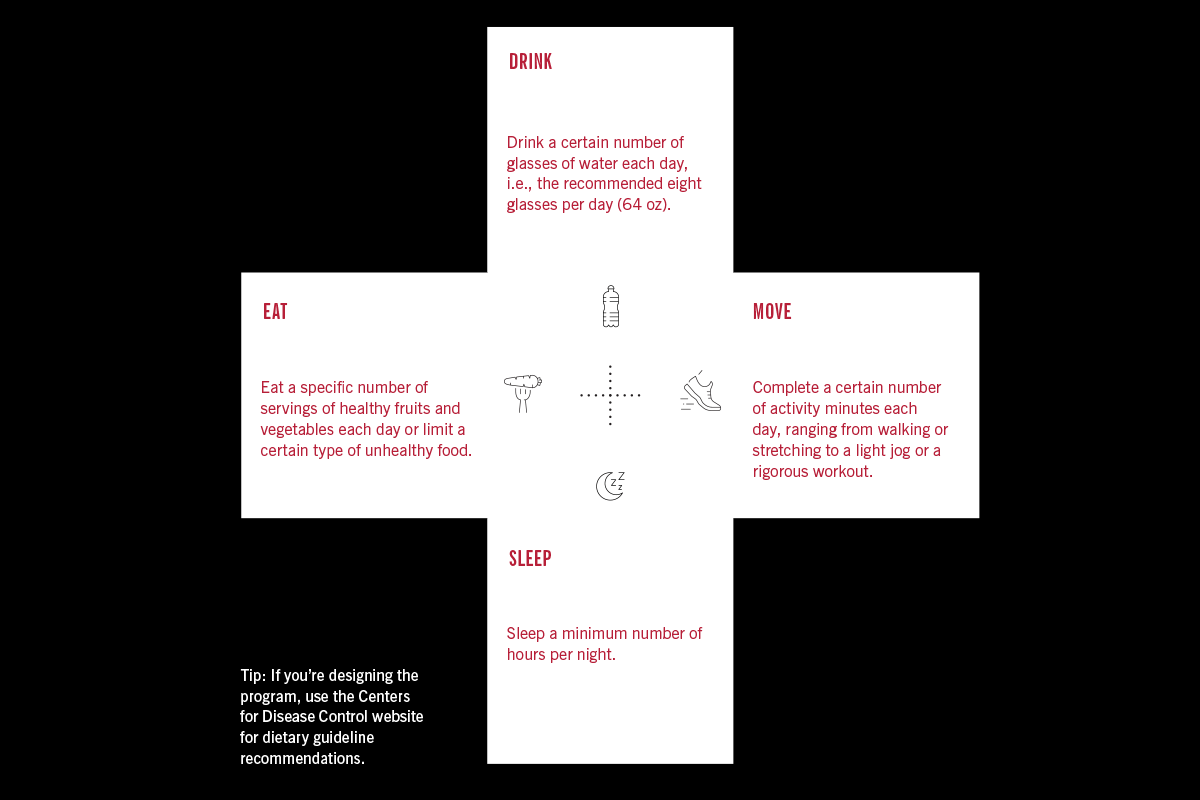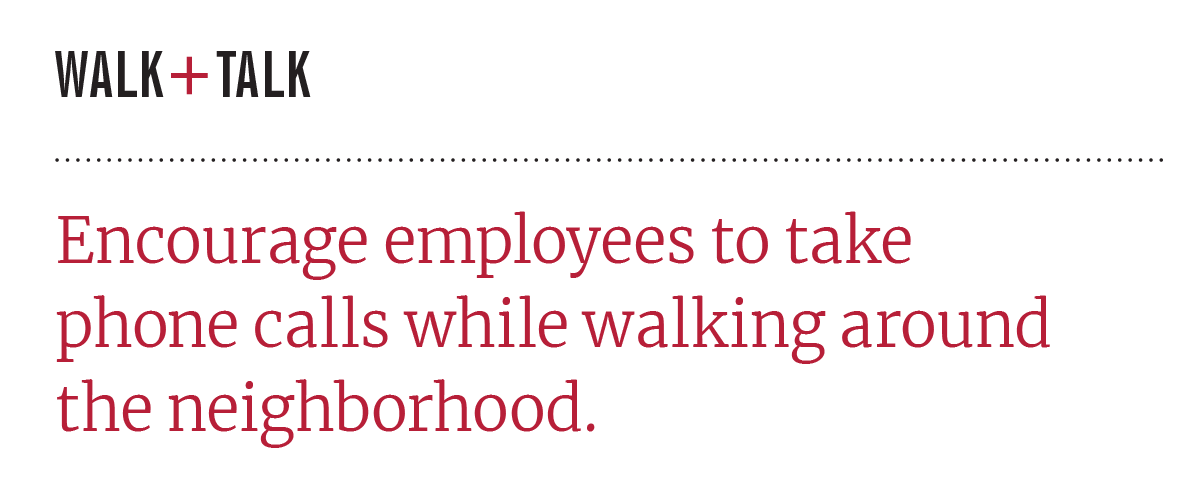Health and wellness programs offer numerous benefits to both the employer and employee. For the employee, they help build a foundation of healthy behaviors that can become more permanent lifestyle changes. They reduce elevated health risks that lead to severe issues like cardiovascular disease and stroke. And they improve the overall happiness and welfare of employees.
For the employer, a healthy workforce means higher productivity, lower health costs, and higher return on investment per employee. Recent research from Population Health Management found that workers with unhealthy lifestyle habits are up to 66 percent more likely to exhibit high presenteeism, when mental and physical conditions prevent full productivity while at work. Additionally, according to a recent Optum study, health and wellness programs also lead to higher retention, even if employees don’t use them.
But what constitutes a successful health and wellness program, and how do you implement one in your company? Typical wellness programs address lifestyle changes and disease management and prevention. Unfortunately, many of the programs focus only on diet and exercise and exclude other critical dimensions beyond the physical, like emotional and social well-being.
A successful health and wellness program must include components that support all the dimensions of health and wellness if it’s to create sustainable, healthy habits that ultimately help employees in the company maximize their quality of life and improve their workplace productivity.
01
OBTAIN EXECUTIVE-LEVEL BUY-IN
Fast forward to 2020, and the conversation has shifted dramatically. Many C-level leaders now realize the implicit and explicit benefits of driving a more holistic wellness program. That said, not all C-level executives are on board with the investment … but they need to be. Executive alignment is critical at the boardroom level to successfully fund and sponsor health and wellness programs and ensure they are sustainable over an employee’s entire career. The business case here is not complex; however, sharing the long-term benefits toward employee healthiness with execs may also inspire the C-level team to not only sponsor health and wellness programs but also actively participate in them themselves.
02
FORM YOUR HEALTH AND WELLNESS TEAM
03
DEFINE THE MISSION AND SET MEASURABLE GOALS
One useful tool to use when setting goals is a survey, which can help the team understand what
aspects of health and wellness most interest the company’s employees. Surveys also allow employees to feel more engaged in the health and wellness plans, as they feel they are being listened to. Health and wellness teams can also include benchmarking metrics in the survey so the team can gauge where employees may feel they are in their health and wellness journey and then compare results annually.
In summary, the strategy and planning of the health and wellness program should be developed with the employees in mind and leverage wellness areas that employees feel most vested in. To encourage support and adoption from both leadership and employees, try aligning the mission, vision, and goals of the health and wellness team to those of the firm.
04
DEVELOP ENGAGING PROGRAMS AND ACTIVITIES
One type of gamified activity that has seen great success as part of a larger health and wellness offering is the daily tracking and scoring of a Drink, Eat, Move, and Sleep competition. Essentially, each employee self-reports their daily tracking of points across each of these four categories for a fixed period of time. This program is lightweight and easy to both implement and maintain. It is also scalable, easy to tailor to individual goals, and builds camaraderie through competition. Participants can compete individually or divide into teams if they need accountability partners.
A “Know Your Numbers” session to kick off the competition is a great way to stimulate interest and give the Health and Wellness team the baseline data they need to reward both overall improvement and participation.
During the competition, the health and wellness team can introduce new challenges and reward participants for addressing other areas of wellness, like meditating daily, disconnecting from devices and screens, or spending time outdoors. An added bonus is that the categories and format lend themselves to other spinoff competitions that can be self-organized, such as a daily step-tracking group or a healthy recipe exchange.
Know Your Numbers Competition

The four categories can be loosely defined as Drink, Eat, Move, and Sleep.
Introducing additional challenges and ad hoc prizes like company swag also helps generate interest and build momentum, although prizes are just one form of incentive. When brainstorming incentives, it’s important to align them to company values and competition goals in order to encourage the highest level of participation. For example, in a community-centric organization, you might consider a financial donation to a nonprofit of the winner’s choice. A competitive organization can set up cross-company or intracompany competitions.
Or, if the budget permits, financial incentives such as monthly gym membership offsets or company subsidies for in-home fitness equipment work well to motivate people to participate in specific tasks. Consider rewarding winners with reoccurring local fresh produce delivery or a paid subscription to a meditation app like Headspace. That said, if budgets are limited, genuine praise and recognition from peers and leadership is incentive enough.
Finally, all successful programs that drive engagement need to have leadership support and an occasional refresh. Programs that get overhauled regularly with new added components keep employees excited, energized, active, and engaged. Health and wellness leadership teams should also be refreshed, similar to how board positions rotate every two years, to empower others and inject new ideas.

05
COMMUNICATE PROGRAMS, EDUCATION, AND RESOURCES
The health and wellness team can also publish specific wellness-oriented quarterly or monthly newsletters showcasing various health trends, articles, and upcoming company and public fitness events and competitions. Even better, giving employees the ability to share goals, wins, and success stories in a company newsletter, website, or email blasts can have the dual benefit of recognizing champions and motivating other employees.
Common barriers to participating in a corporate-wide health and wellness programs include lack of time, lack of awareness, and lack of access. Increase awareness by communicating regularly across multiple mediums. In addition to newsletters and lunch-and-learns, post information in hallways, break rooms, or near elevators. And ask leaders to promote health and wellness initiatives at corporate-wide events like quarterly readouts.
Finally, show that you are committed to the programs — and help employees make healthy choices — by enacting small changes around the workplace. For example, serve healthier foods at meetings, and stock vending machines and break rooms with healthy snacks and beverages. Carve out a quiet space in the office that employees can use to de-stress. Build in time for mental breaks by scheduling 45-minute instead of hourlong meetings. Or simply encourage employees to take phone calls while walking around the neighborhood. Do whatever you can to make the healthy option the first (and easiest) option for your employees.
As you can see, implementing robust health and wellness programs that appeal to the interests, goals, and demographics of the organization is not as difficult as some in management might think. Nor do they require a large line item in the budget. All it takes is a leader to start assembling a team and developing a plan. Companies will realize that even a small investment in the well-being of employees through holistic health and wellness programs can yield big results both for the employees and the company. In the end, the benefits are clear: A healthier and more engaged workforce leads to lower health care costs, happier employees, higher retention, and higher productivity.
